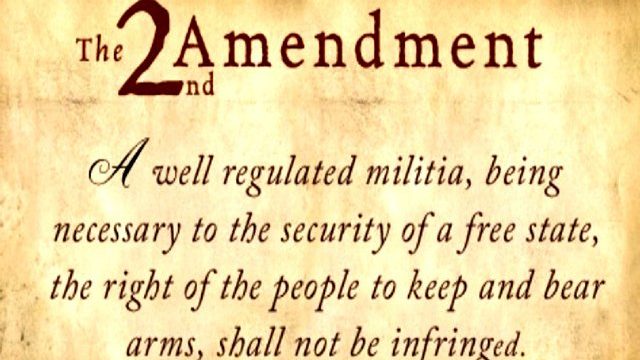Why do we, as a nation, react the way we do anytime a lone gunman opens fire in a public space, killing and injuring multiple people? It can’t be because of the numbers alone. In the same week as El Paso and Dayton, one year prior, more people were killed and injured in separate incidents in Chicago.
No, it’s something else. Something tougher gun control laws or increased awareness of mental illness will not by themselves resolve. The carnage in Ohio and Texas—like at the Parkland, Florida, high school, the Las Vegas music festival, the Fort Hood Army base and elsewhere—was so seemingly random, it struck at our sense of personal safety.
These mass shootings are so threatening in an existential sense because each of us could just as easily be a victim as those who were. Any of us could be in the wrong place at the wrong time, defenseless against the madness that suddenly surrounds us.
The folks pushing for stricter gun control laws—for a ban on the sale of certain kinds of guns because they look particularly dangerous (in reality, all guns are dangerous), the expansion of gun-free zones or the creation of tougher “red flag laws” that may not pass constitutional muster because they short-circuit the due process each one of us is guaranteed in the Bill of Rights—are wasting their time and energy. None of these proposals do anything to get us to the real solutions that come about by bridging the gap between technology, physical safety issues and information sharing in times of crisis.
That’s what John South, a man with more than 25 years of managerial experience in security and large-scale business operations who served in both the U.S. military and law enforcement, is trying to do. After the April 2013 Boston bombing, when two homemade devices detonated 12 seconds and 210 yards apart, killing three and injuring hundreds gathered near the finishing line of the city’s famous marathon, South started thinking about the need to apply new technology to the problem of keeping people safe.
“In today’s world, ‘safety’ is a term we hear more often with the increase in soft target attacks in the U.S. and abroad,” the U.S. military veteran and former law enforcement official told me. “In any emergency, everyone wants to be saved. My goal was to find a way to do that using existing technology, as well as the tools we have built to enhance the process of saving lives.”
His solution, marketed through the company he founded, Patrocinium Systems, is already at work saving lives. According to company officials, after the Paris stadium bombing in 2015, the Patrocinium’s technology—which was still being beta-tested at the time—found and accounted for all its users in under 20 seconds. And it’s all based on smartphones.
“Almost everyone walks around with a phone in their pocket. Our phone has become the platform we use in social and work interaction almost every moment of every day. I realized the same device could and should be used for communications and location data in emergencies. My goal from inception, with a great understanding of security from my past, is to provide real-time awareness of emergency data, as well as the ability to respond to people faster with more accurate information to save more lives,” South told me.
It is, in a sense, astonishingly simple. It relies on existing sensors and software to generate information about what’s happening as it happens when an event takes place. South suggests thinking of it as being like Waze—the smartphone mapping app that partially relies on user inputs to provide a real-time picture of what’s happening on the roads—but for crisis situations like bombings, shootings, fires and other events that trigger the need for first responders.
According to South, the system notifies users if they are in danger based on their location, allows people to check in as being “safe” or “unsafe,” and visualizes the real-time location of users for a heightened response. “In the fire in Paradise, California, the system could have been deployed in 10 minutes, used for communication and location of people in need by neighborhood in seconds, creating a triage of greater response,” he said.
This is the kind of thinking America needs to take on the challenge posed by mass shootings. The frenzied demands made by politicians and anti-gun advocates in the aftermath of the latest tragedies might win them votes, but it won’t make us any safer. For that, we need visionaries like John South and others in the technology sector taking the lead.

